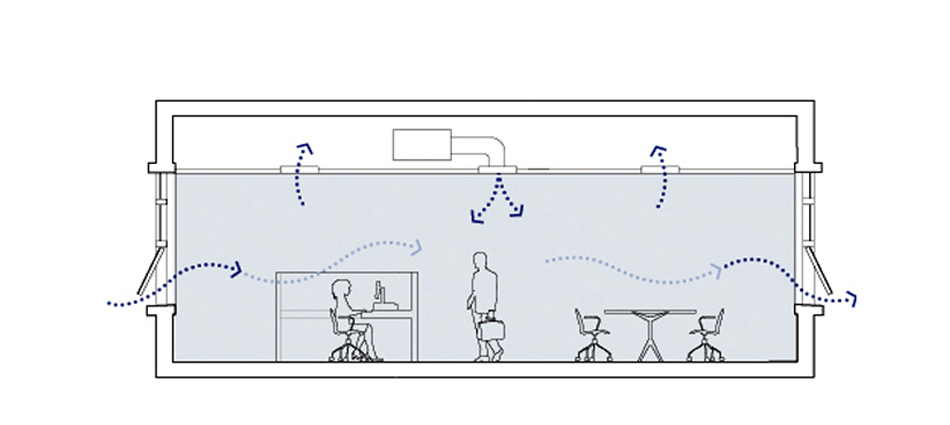Research – ‘Mixed-mode’ Ventilation in Building Design – Research with UC Berkeley’s Center for the Built Environment – 2005


Why is it important to use natural ventilation in building design? The added oxygen content keeps occupants more awake. Natural ventilation can carry pleasant smells from outside. And the experience of air movement from the exterior is a reminder of the larger world around us. Natural ventilation can be incorporated through operable windows, which give people a greater sense of control over their environment, and through mixing with conditioned air.
The majority of buildings with complex mechanical systems re-circulate the air that you breathe daily. This is because energy has been expended to heat or cool that air and to adjust it to an appropriate level of humidity. Incorporating natural ventilation does not have to be more energy-intensive, but it may require acceptance of a larger range of temperature and humidity conditions.
In 2005, Marie S.A. Sorensen assisted Dr. Gail Brager of UC Berkeley’s Center for the Built Environment, in researching mixed-mode approaches to mechanical equipment design. As described by Brager, the term ‘mixed-mode’ refers to “…a hybrid approach to space conditioning that uses a combination of natural ventilation from operable windows (either manually or automatically controlled), and mechanical systems that include air distribution equipment and refrigeration equipment for cooling. A well-designed mixed-mode building begins with intelligent façade design to minimize cooling loads. It then integrates the use of air-conditioning when and where it is necessary, with the use of natural ventilation whenever it is feasible or desirable, to maximize comfort while avoiding the significant energy use and operating costs of year-round air conditioning.”
The research includes eight in-depth Case Studies and a Database of information about 150 buildings world-wide that utilize mixed mode strategies in a variety of climate conditions and program types – from institutional to commercial and multi-family residential buildings.
